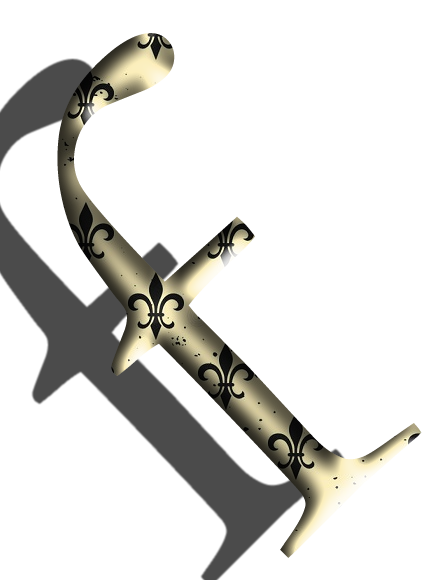ESPAÇO E TECNOLOGIAS ASSISTIVAS
A EDUCAÇÃO INCLUSIVA NO COMPONENTE CURRICULAR HISTÓRIA E CULTURA AFRO-BRASILEIRA E AFRICANA
DOI:
https://doi.org/10.22481/folio.v13i2.9754Keywords:
Libras; Memória; Ensino Superior; Educação Inclusiva.Abstract
This article comes from a work carried out in the subject Identity, Space and Memory at PGCULT - Graduate Program in Culture and Society, which I attended through the exchange of the National Academic Cooperation Program-PROCAD/CAPES, a partnership between the Program of Postgraduate studies in Memory: Language and Society at the State University of Southwest Bahia (UESB) and the PGCULT at the Federal University of Maranhão (UFMA). The article was built through the analysis of how space and Assistive Technologies (AT) are related. It aims to understand how the space linked to Assistive Technologies can contribute to the curricular component of Afro-Brazilian and African History and Culture in education of the deaf, in the Licentiate course in Letters/Libras, and how this discipline can be represented in Libras for the inclusive context of higher education at the Federal University of Maranhão, São Luís campus. The theoretical references that guided this work were : Lévy (1999), Soares (1998); Shins (2011); Gesser (2009) and Raffestin (2010). The methodology adopted was Narrative Analysis, using semi-structured interviews and documental analysis of the course Letters/Libras at the aforementioned University as the data collection technique. The interviews were carried out with a professor from the permanent staff of the Letras/Libras course and a deaf student enrolled in the Licentiate Degree course in Letters/Libras at UFMA/Campus de São Luís. assistive technologies that can contribute to the expansion of communication skills and the resolution of functional difficulties in accessing higher education.
Downloads
References
BRASIL, Conselho Nacional de Educação. Resolução CNE/CP n.º 1, de 17 de junho de 2004. Institui Diretrizes Curriculares Nacionais para a Educação das Relações Étnico-Raciais e para o Ensino de História e Cultura Afro-Brasileira e Africana. Disponível: http://portal.mec.gov.br/dmdocuments/cnecp_003.pdf. Acesso em: 10 abril. 2020.
______. Lei No 10.639, de 9 de janeiro de 2003. Disponível: http://www.planalto.gov.br/ccivil_03/leis/2003/L10.639.htm. Acesso em: 10 abril. 2020.
______. Ministério Público de Pernambuco. 50 anos da marcha de Selma a Montgomery A conquista do direito ao voto. Disponível: http://www.mppe.mp.br/mppe/files/GT-Racismo/Informativo_GT-Racismo_n_34.pdf. Acesso em: 10 abril. 2020.
______. Constituição (2002). Dispõe sobre a Língua Brasileira de Sinais – Libras e dá outras providências. Lei n° 10.436, 24 de abril de 2002, Brasília, DF.
______. Decreto 5.626, de 22 de dezembro de 2005. Regulamenta a Lei no 10.436, de 24 de abril de 2002. Dispõe sobre a Língua Brasileira de Sinais -Libras, e o art. 18 da Lei no 10.098, de 19 de dezembro de 2000. Diário Oficial da União, Brasília, DF, 19 dez. 2005. Disponível em: http://www.planalto.gov.br/ccivil_03/_ato2004- 2006/2005/decreto/d5626.htm. Acesso em: 10 mar. 2021.
BERSCH, Rita; TONOLLI, de José Carlos. Introdução ao Conceito de Tecnologia Assistiva 2006. Disponível em<http://www.bengalalegal.com/tecnologia-assistiva>.Acesso em: 10 mar. 2021.
CANELAS, Antonio, Albino. Cultura e Políticas Culturais. Ed. Azougue, 2011.
CAPRA, Fritjof. A teia da vida uma nova compreensão científica dos sistemas vivos. Editora cultrix São Paulo, 1996.
DA SILVA, Tomaz Tadeu et al. A produção social da identidade e da diferença. Identidade e diferença: a perspectiva dos estudos culturais. Petrópolis: Vozes, p. 73-102, 2000.
DA SILVA, Tomaz Tadeu da. Documentos de Identidade: Uma introdução às teorias do currículo. 1. reimp. Belo Horizonte: Autêntica, 2011.
DE QUADROS, Ronice Müller; SCHMIEDT, Magali LP. Ideias para ensinar português para alunos surdos. Brasılia: Mec, SEESP, 2006.
DENZIN, Norman K.; LINCOLN, Yvonna S. (Ed.). The Sage handbook of qualitative research. sage, 2011.
GESSER, Audrei. LIBRAS: que língua é essa? Crenças e preconceitos em torno da língua de sinais e da realidade surda. São Paulo: Parábola Editorial, 2009.
HALBAWACHS, Maurice. A memória coletiva. São Paulo. Edições Vértice, 1990.
KENSKI, V. Tecnologias e ensino presencial e a distância. Campinas: Papirus, 2003.
LÉVY, Pierre. Cibercultura. São Paulo: Editora 34, 1999.
NOGUEIRA, Maria Alice. Favorecimento econômico e excelência escolar: um mito em questão. Revista Brasileira de Educação, n. 26, p. 133-144, 2004.
QUADROS, R. M; KARNOPP, L. B. Língua de sinais brasileira: estudos linguísticos. Porto Alegre: Artmed, 2004.
RAFFESTIN, Claude; DO PODER, Por Uma Geografia do Poder. Tradução Maria Cecília França. São Paulo: Editora Ática, 1993.
SCHALLENBERGER, A. Ciberhumor nas comunidades surdas. 72f .Dissertação(Mestrado em Educação)-Universidade Federal do Rio Grande do Sul,Porto Alegre,2010.
SCHERER-WARREN, Ilse. Redes de movimentos sociais. Edições Loyola, 1993.
SOARES, Magda. Letramento-um tema em três gêneros. Autêntica, 2018.
VIEIRA, Anna da Soledade. Redes de ICT e a participação brasileira. Brasília: IBICT, 1994.
Downloads
Published
How to Cite
Issue
Section
License
Copyright (c) 2022 fólio - Revista de Letras

This work is licensed under a Creative Commons Attribution-NonCommercial 4.0 International License.







